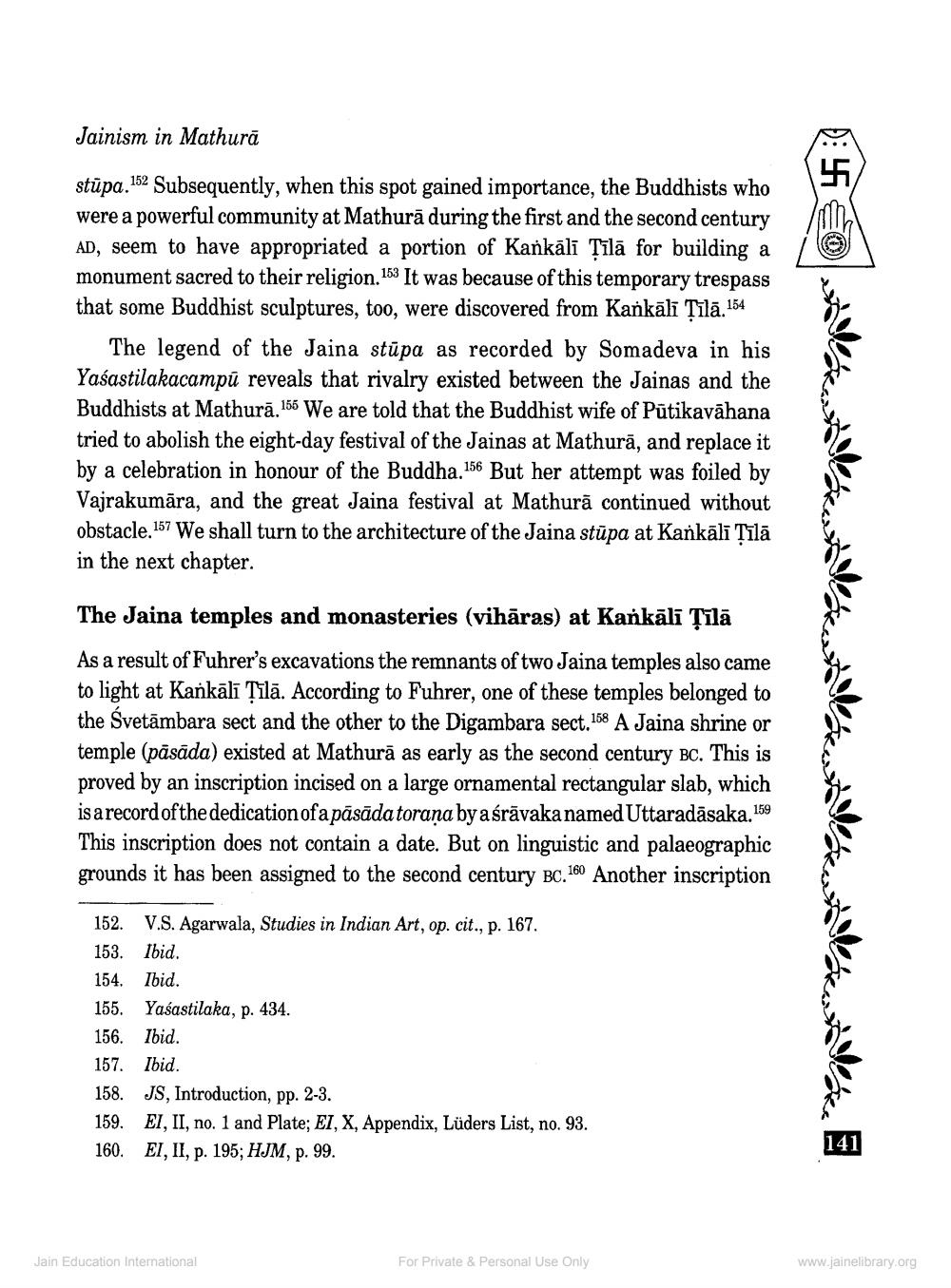________________
Jainism in Mathurā
stūpa.152 Subsequently, when this spot gained importance, the Buddhists who were a powerful community at Mathurā during the first and the second century AD, seem to have appropriated a portion of Kankālī Tīlā for building a monument sacred to their religion. 163 It was because of this temporary trespass that some Buddhist sculptures, too, were discovered from Kankālī Tīlā.154
The legend of the Jaina stūpa as recorded by Somadeva in his Yaśastilakacampú reveals that rivalry existed between the Jainas and the Buddhists at Mathurā.155 We are told that the Buddhist wife of Pūtikavāhana tried to abolish the eight-day festival of the Jainas at Mathurā, and replace it by a celebration in honour of the Buddha.156 But her attempt was foiled by Vajrakumāra, and the great Jaina festival at Mathurā continued without obstacle. 157 We shall turn to the architecture of the Jaina stūpa at Kankālī Tīlā in the next chapter.
The Jaina temples and monasteries (vihāras) at Kankālī Tīlā
As a result of Fuhrer's excavations the remnants of two Jaina temples also came to light at Kankālī sīlā. According to Fuhrer, one of these temples belonged to the Svetāmbara sect and the other to the Digambara sect.168 A Jaina shrine or temple (pāsāda) existed at Mathurā as early as the second century Bc. This is proved by an inscription incised on a large ornamental rectangular slab, which is a record of the dedication of a pāsāda torana by aśrāvaka named Uttaradāsaka. 159 This inscription does not contain a date. But on linguistic and palaeographic grounds it has been assigned to the second century BC.160 Another inscription
152. V.S. Agarwala, Studies in Indian Art, op. cit., p. 167. 153. Ibid. 154. Ibid. 155. Yaśastilaka, p. 434. 156. Ibid. 157. Ibid. 158. JS, Introduction, pp. 2-3. 159. EI, II, no. 1 and Plate; EI, X, Appendix, Lüders List, no. 93. 160. EI, II, p. 195; HJM, p. 99.
Jain Education International
For Private & Personal Use Only
www.jainelibrary.org




